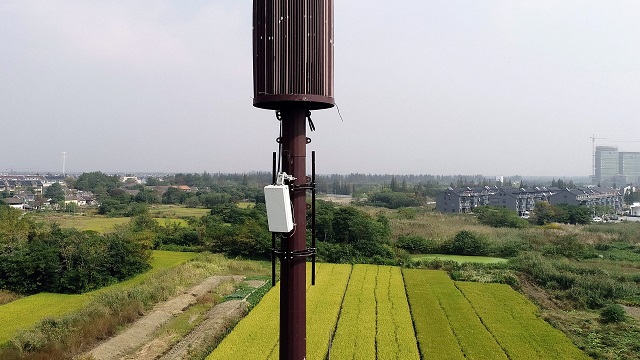The latest ABI Research report has revealed Huawei, ZTE, Nokia, Ericsson, Samsung, and others invest in innovative hardware technologies in order to improve energy efficiency of 5G networks that they supply to mobile operators.
 Leading mobile network operators have started making investment in 5G business in order to improve mobile ARPU. The number of 5G connections reached 521 million in Q4 2021. Industry firm 5G Americas says 5G connections are forecast to reach 1.3 billion by end of 2022. 5G connections in North America reached 72 million at end of 2021.
Leading mobile network operators have started making investment in 5G business in order to improve mobile ARPU. The number of 5G connections reached 521 million in Q4 2021. Industry firm 5G Americas says 5G connections are forecast to reach 1.3 billion by end of 2022. 5G connections in North America reached 72 million at end of 2021.
Dell’Oro Group, in its latest research report, said Capex of telecom network operators in wireless and wireline network will grow at 3 percent in 2022 as compared with 9 percent increase in 2021. Capex will drop in 2023 and 2024, the report said.
ABI Research said 5G has proven to be 90 percent more energy-efficient than 4G in terms of energy consumption per unit of traffic. Investment in 5G is expected to cause a significant increase in energy consumption due to the implementation of Massive Multiple-Input, Multiple-Output (mMIMO), and the level of network densification.
A 5G base station requires 3X more energy to provide the same coverage as a 4G network, burdening network operators with high energy costs and Capital Expenditure (Capex). Hardware optimization will lead to significant improvement in power consumption, i.e., the new generation of chipsets will offer typical energy savings of 30 percent to 70 percent.
“5G energy consumption depends on radio configuration, hardware, and traffic load, and over 70 percent of the consumed energy is in the Radio Access Network (RAN). A 5G RAN consumes up to 2.7 Kilowatts (kW) of power with 64T64R mMIMO configurations in a typical condition, whereas a Long-Term Evolution (LTE) radio consumes about 0.8 kW,” Fei Liu, 5G & Mobile Network Infrastructure Industry Analyst at ABI Research, said.
ABI Research suggests that mobile network operators should only deploy 64T64R mMIMO radio in dense urban areas with high traffic demands. Within the mMIMO systems, Power Amplifiers (PAs), baseband process modules, Digital Intermediate Frequency (DIF), and transceivers are the main contributors to power consumption.
Mobile network vendors such as Huawei, ZTE, Nokia, Ericsson, Samsung, and others invest in innovative hardware technologies that improve energy efficiency. This includes Gallium Nitride (GaN)-based PAs, more powerful chipsets, liquid cooling, and new materials and designs.
GaN is ideal for mMIMO, GaN in a Doherty PA configuration can increase power efficiency by over 50 percent, significantly reducing the power usage of the power-hungry mMIMO system and lowering operation costs for network operators, ABI Research said.
IDTechEx’s latest research report said the energy consumption of telecoms towers is set to increase significantly. The adoption of wide bandgap semiconductors like GaN is one method to reduce the impact due to power consumption. GaN provides 10 percent or more improvements for efficiency.
Liquid-cooled sites are 50 percent smaller and 30 percent lighter than standard active air conditioning units and require no maintenance, enabling significant savings, ABI Research said.
The new generation of chipsets can yield typical energy savings of 30 percent to 70 percent while boosting mMIMO performance. New architecture can also reduce energy consumption, improve coverage, and enhance performance.
Huawei’s MetaAAU, for example, allows base stations to achieve the same range with less transmit power and lower energy consumption by 30 percent.
At the same time, Nokia’s liquid cooling has proven to reduce power by 70 percent and operating expense by 30 percent.
Ericsson’ Radio 4490, a dual-band radio, delivers 25 percent lower power consumption and lesser weight compared to the current product. This radio type is compatible with most of the radio sites globally as it supports the main FDD (Frequency Division Duplex) bands being used by many service providers for their 5G deployment.
Ericsson is also launching a high-power version of the new dual-band radio, 4490 HP, which enables up to 50 percent more output power compared to current radios. The two new radios apply passive cooling – reducing power consumption further, as fans are not needed.
ZTE says its 12T12R OmniUBR can support a 3-sector-site with the most widely-used 5 bands in the Sub-3GHz spectrum. This makes the number of radio modules, the footprint and the power consumption reducing by 87 percent, 57 percent and 40 percent respectively, improving deployment efficiency and O&M costs.
ZTE’s wide-band Massive MIMO product series can cope with C-band 400M bandwidth for multiple operators. ZTE said the wide-band Massive MIMO product series have smaller weight and lower power consumption, compared with the previous generation products.
Baburajan K





